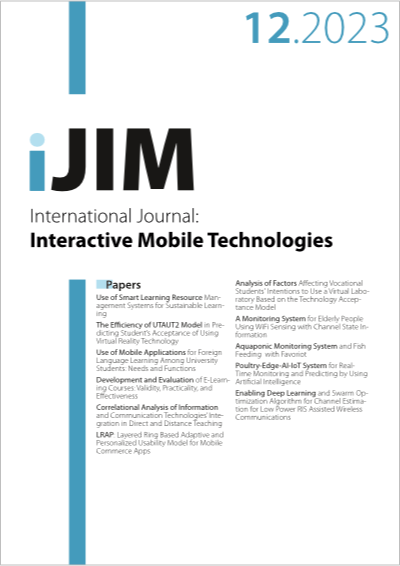Analysis of Factors Affecting Vocational Students' Intentions to Use a Virtual Laboratory Based on the Technology Acceptance Model
DOI:
https://doi.org/10.3991/ijim.v17i12.38627Keywords:
Technology Acceptance Model, Virtual Laboratory, Student Intentions to Use, Remote Learning, Vocational studentsAbstract
This study discusses the analysis of various variables affecting vocational students' intention to use a Virtual Laboratory (VL) in remote learning. Based on the Technology Acceptance Model (TAM), perceived ease of use (PEU), and perceived usefulness (PU) as exogenous variables. At the same time, attitudes towards VL (A) as an intervening variable. This research was conducted in the learning process of the Power Electronics Practicum for vocational education students. This study involved 105 vocational students from the Industrial Electrical Engineering Study Program, at Universitas Negeri Padang. Research data were analyzed using Partial Least Square-Structural Equation Modeling (PLS-SEM). The study results showed that the exogenous variables (PEU, PU, & A) had a significant and positive effect (directly and indirectly through intervening variables) on vocational students' intentions to use the virtual laboratory to support the implementation of remote learning in the Power Electronics Practicum Course. These factors can be considered in determining the appropriate virtual laboratory application to be applied in the learning process.
Downloads
Published
How to Cite
Issue
Section
License
Copyright (c) 2023 Doni Tri Putra Yanto, Sukardi Sukardi, Maryatun Kabatiah, Hermi Zaswita, Oriza Candra

This work is licensed under a Creative Commons Attribution 4.0 International License.


